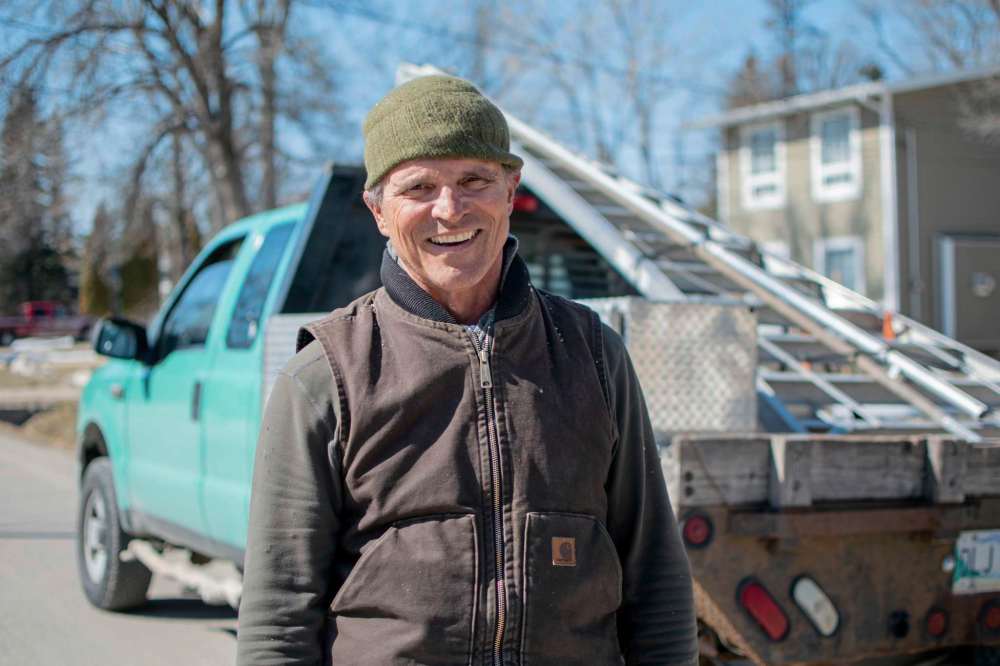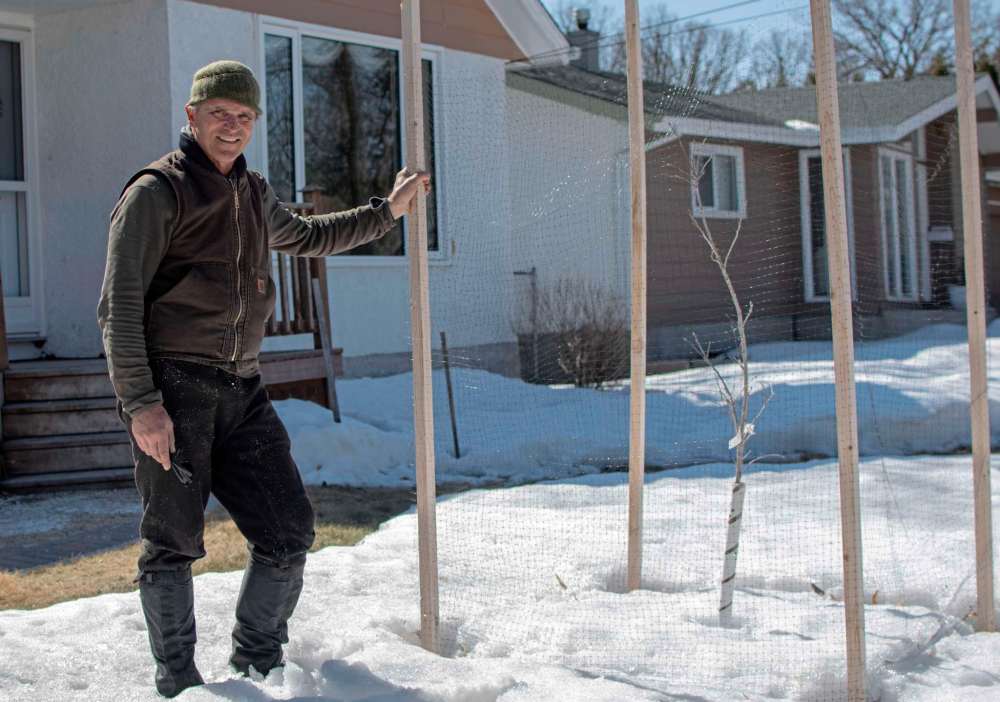A little ReLeaf for city’s canopy
Advertisement
Hey there, time traveller!
This article was published 05/04/2019 (2430 days ago), so information in it may no longer be current.
The giant oak trees of Charleswood are the neighbourhood’s original residents.
Aside from the oaks, the area was largely devoid of trees when the community started growing after the Second World War, according to local arborist and Trees Winnipeg president Gerry Engel. Most of the mature trees that shade the neighbourhood today were planted by residents through a government subsidy program — much like the program Trees Winnipeg has been running for the last three years.

Engel met with The Metro on a quiet, tree-lined strip of Robindale Road to talk about the organization’s ReLeaf Tree Planting Program, which provides Winnipeggers with a sapling and detailed planting instructions for $55.
“It’s kind of an interesting area to talk about ReLeaf because we see the need for residents to plant more trees,” he said. “The city is failing at replanting enough trees considering the number that are being removed, but also private residents aren’t replacing trees at the rate that we need to in order to maintain the urban forest.”
Winnipeg’s canopy is suffering from monoculture planting and forestry decisions made in the city’s early days.
American elms were planted all over Winnipeg because they are winter hardy and fast growing, explained Richard Westwood, chair of the Department of Environmental Studies and Sciences at the University of Winnipeg.
“There’s so many great things about elms and that’s why elms were so widely planted in a lot of northern cities over the last 150 years,” Westwood said, adding that the City turned to ash trees when Dutch elm disease showed up in the 1970s. “We now have an invasive ash pest from another continent and we’re kind of pickled.”
According to data from the City of Winnipeg, roughly 46 per cent of the city’s urban forest is made up of American elm and green ash trees — all of which are at risk of removal due to Dutch elm disease and infestation by the emerald ash borer.
To keep Winnipeg well-treed, Westwood said it’s important to diversify.
“The goal is to not be dependent on any one or two tree species, in terms of urban forestry, but to have a variety of species and have that variety of species dispersed throughout the city,” he said.

Improving diversity is one of the tenets of the ReLeaf program. The trees offered this year include crab apple, maple, lilac, plum and linden and mountain ash.
“It’s also important to offer the homeowners the right trees for their property and a lot of the properties today in newer developments are smaller and can’t accommodate big trees, so we have selections of trees that are of smaller size,” Engel said.
Last year, 400 households planted new trees through the program.
Trees can be ordered through the ReLeaf program until May 1 at treeswinnipeg.org/releaf-tree-planting-program and will be available for pickup in mid-May. Participants are required to attend a planting workshop when they pick up their saplings.




